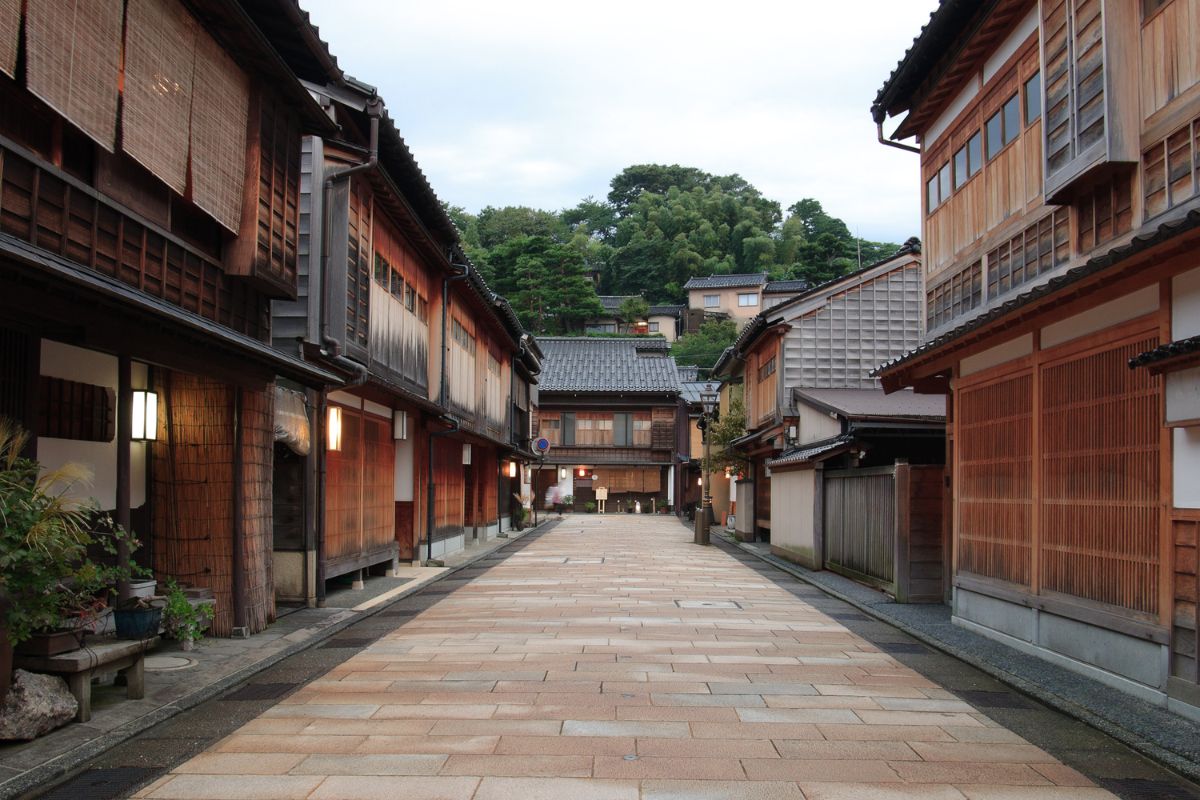The city of Kanazawa has a population of 450,000 and is the capital of Ishikawa Prefecture. Often called Little Kyoto, it is an increasingly popular travel destination with its fashionable old Japanese townscapes, gardens, and castle.
Kanazawa is home to many tourist attractions such as Kenrokuen, one of the three most famous gardens in Japan, and the teahouse district with its rows of traditional houses.
Other things to do in Kanazawa include modern museums where visitors can enjoy contemporary art, as well as unique and stylish cafes and hotels.

Kanazawa became a proud city of craftsmen as the Maeda family, the lords of the Kaga domain skillfully avoided unnecessary conflict and as such had plenty of yen left over to spend on the finer things in life.
The city, which was the fourth largest metropolis in Japan during the Edo period is now a medium-sized city that is packed full of fantastic things to see and do.
Kenrokuen Garden
Kenrokuen KanazawaNumber one on anyone’s list of things to do in Kanazawa is the Kenrokuen, an elegant Japanese garden designated as a national place of special scenic beauty and quite possibly to best garden in Japan.
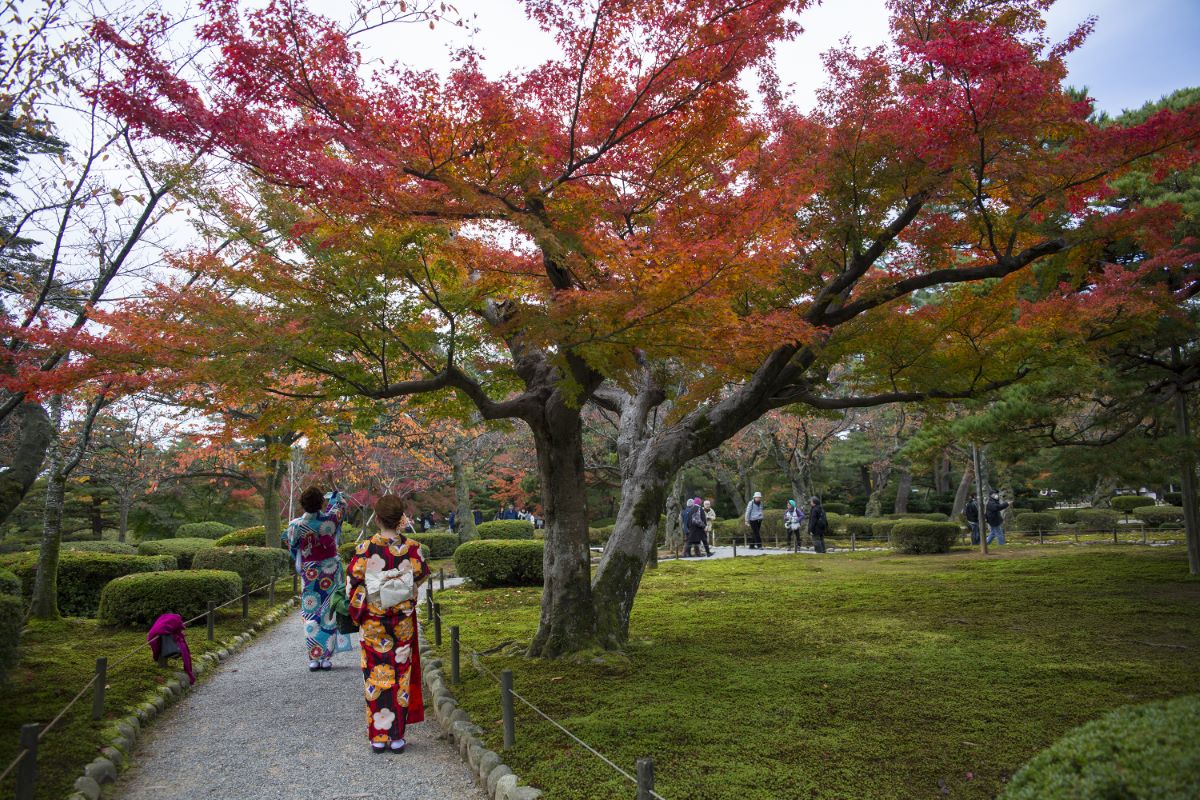
This majestic Japanese garden is said to have its origins in a garden built by the mighty Kaga Clan in the middle of the 17th century on the outer wall of Kanazawa Castle.

It is also known as one of the three best gardens in Japan along with Kairakuen Garden in Mito and Korakuen Garden in Okayama.
The seasonal scenery, which makes the most of nature, such as the snow hanging in winter and the red and white plum blossoms, is considered one of the most beautiful in Japan and was awarded the highest rating of three stars in the Michelin Tourism Guide.
Higashi Chaya District
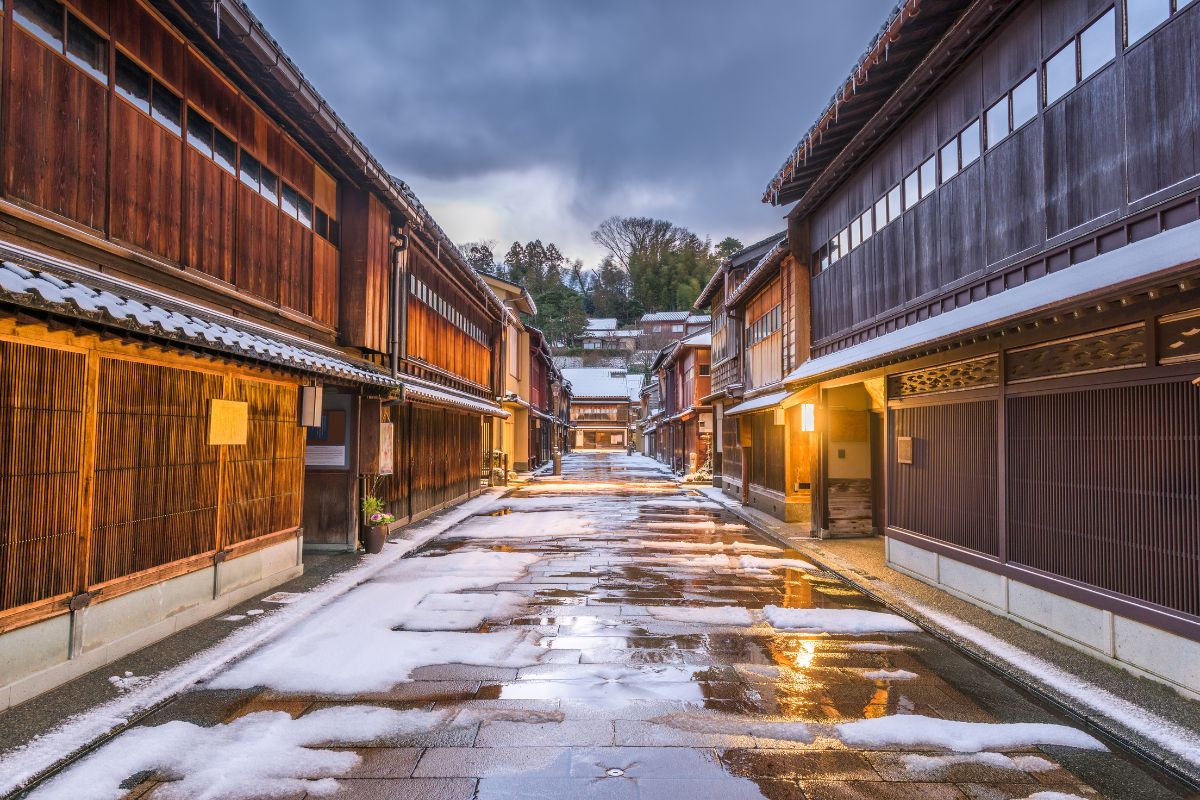
The wonderful Higashi Chaya District is a photogenic townscape with a uniquely Japanese flavor
This small town of teahouses was created by the Kaga Domain during the Edo period (1603-1867), when it was the custom for the castle’s teahouses to be all gathered together,
What makes Higashi Chaya Gai so special is that most of the historical buildings and streetscapes have been beautifully preserved in their original form.
Higashi Chaya KanazawaLined with elegant cafes and fascinating galleries as well as select stores selling traditional crafts, you can feel the atmosphere of a good old teahouse district.
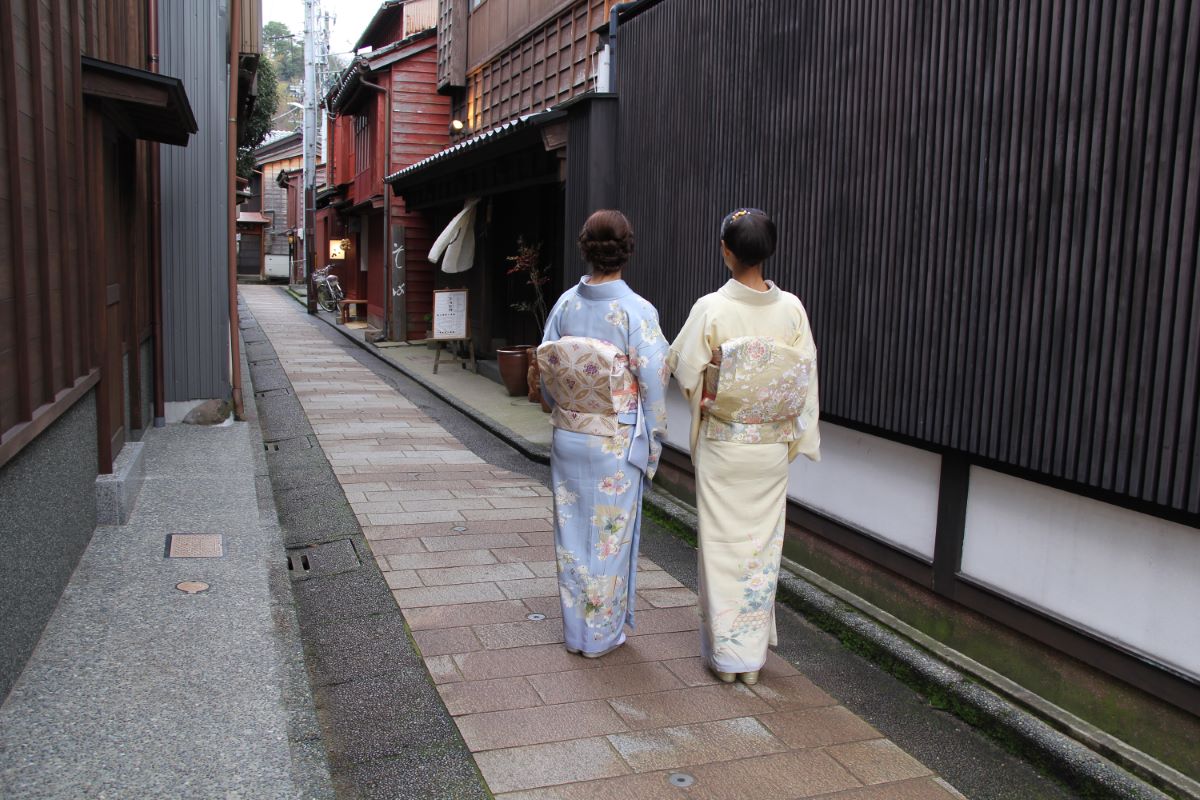
The area is also full of photogenic scenery, and many people are seen getting into the spirit of things by taking pictures in kimonos with the traditional streetscape in the background.
Kanazawa Castle Park
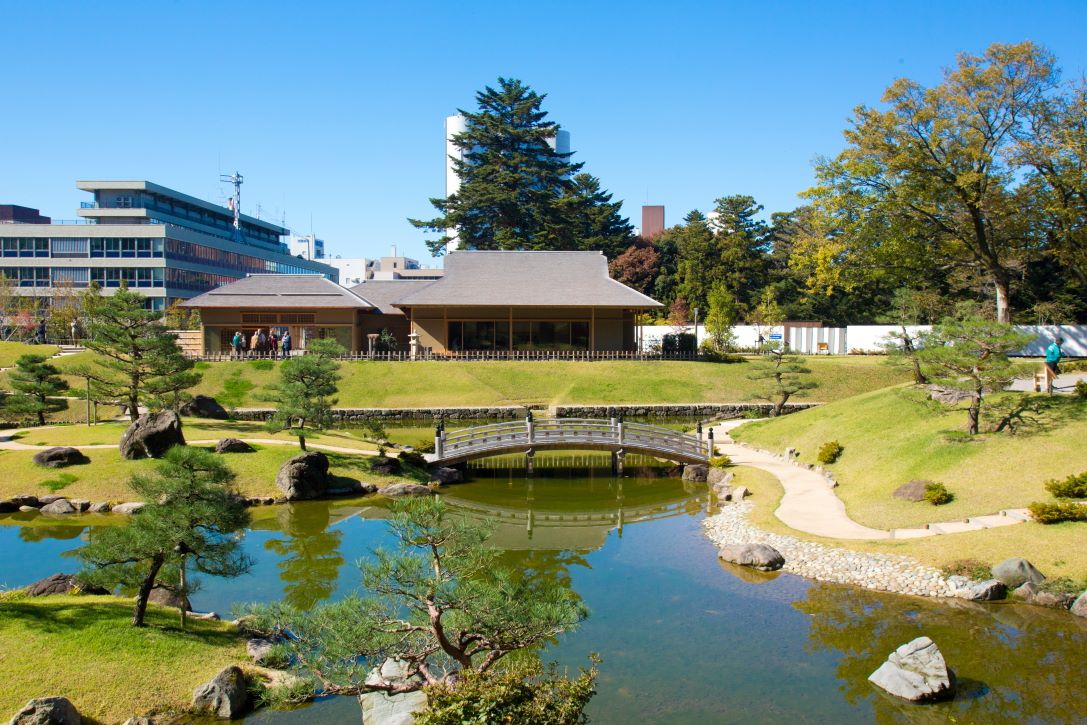
Beautiful “Kanazawa Castle Park” recreated based on the Edo period
This amazing park was created on the site of the former castle and residence of the once formidable Maeda family of the Kaga Domain.

The park’s gates which were faithfully recreated based on old maps and documents are must-see from both the outside and in.
The lofty park is open at night and the lights are put on every Friday and Saturday and visitors can enjoy a different atmosphere from that of the daytime.
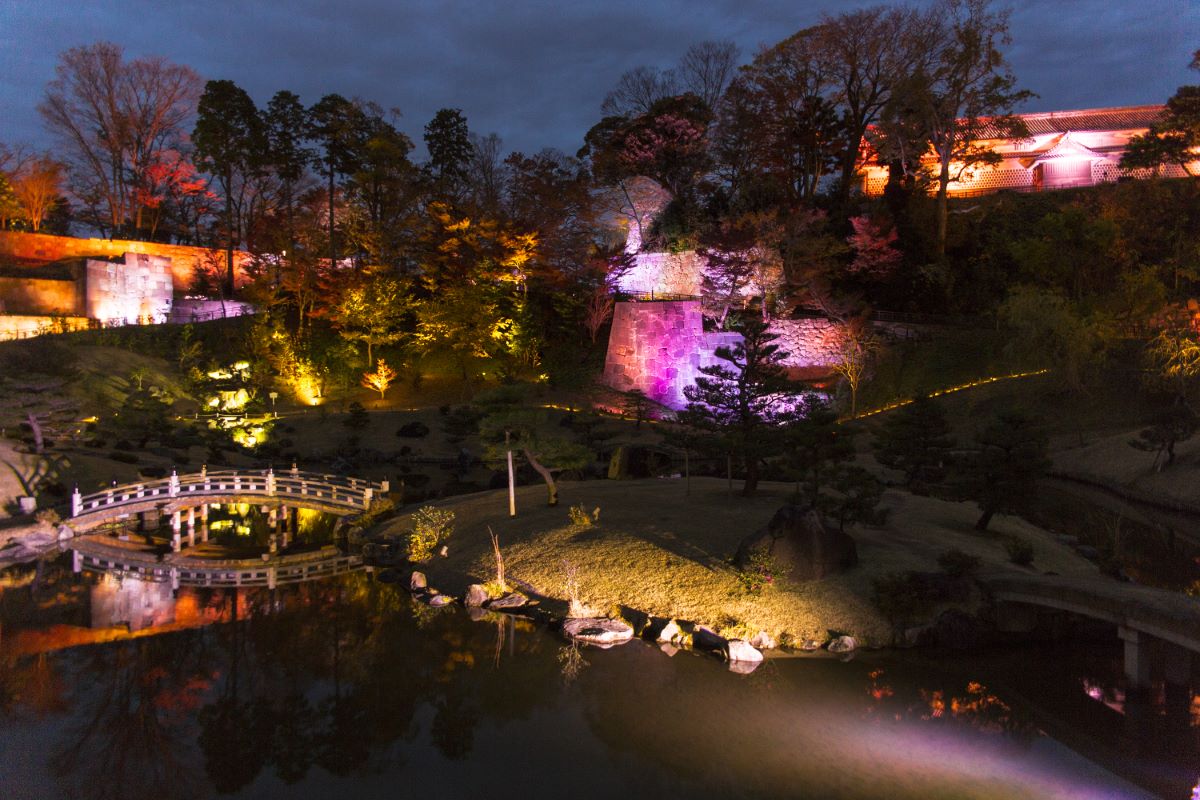
The lighting up of the wonderful Gyokusen-in-maru Japanese Garden changes seasonally, so you can come and enjoy the garden in different seasons.
Matcha green tea and original seasonal fresh sweets served in the Japanese-style room of the tea ceremony house named Gyokusen-an are also a great way to experience the culture of feudal Kanazawa.
Omicho Market
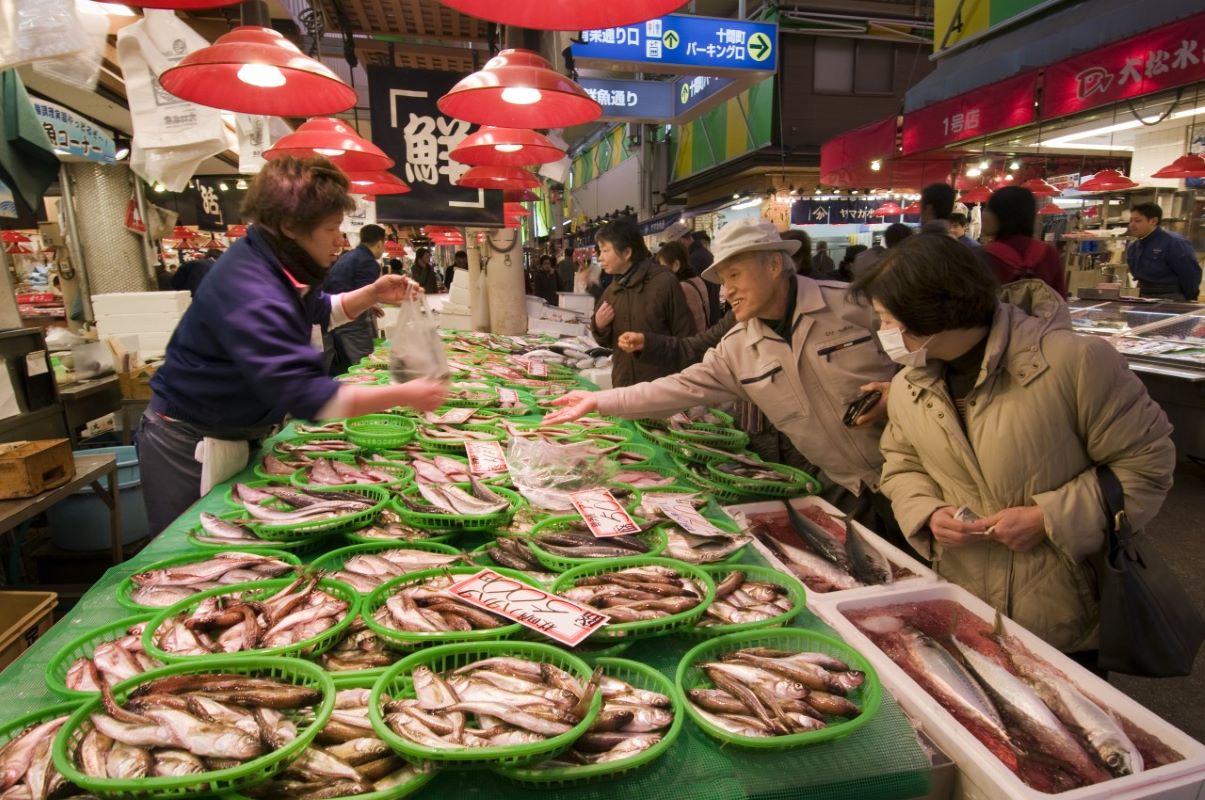
Located in the center of Kanazawa, at the bustling Omicho Fish Market you can find a large collection of delicious food from Kanazawa and the surrounding countryside.
The market is lovingly known as Kanazawa’s kitchen and bustles with locals and travelers alike.
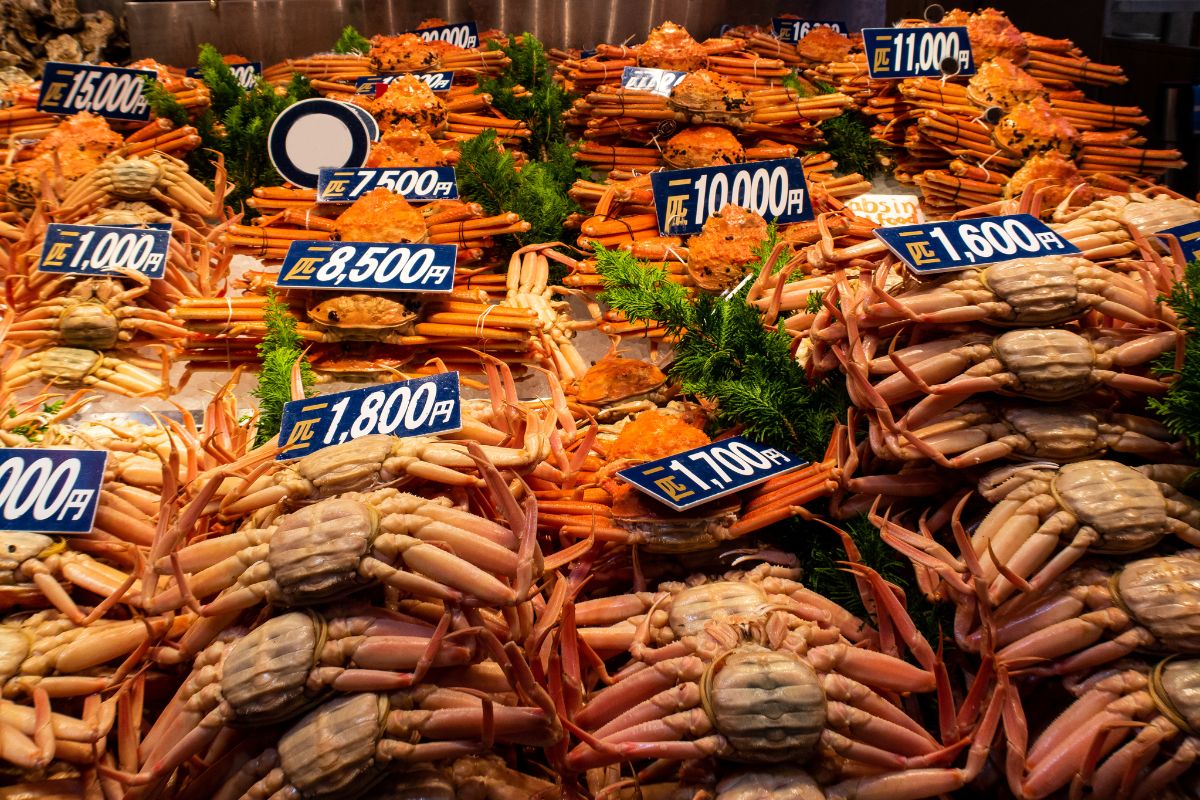
Along with the mouth-watering seafood, vegetables, snacks, and sweets, there are also some reasonably priced sushi restaurants where you can enjoy some of the best seafood bowls you will ever try.
Myoryu-Ji Temple – The Ninja Temple
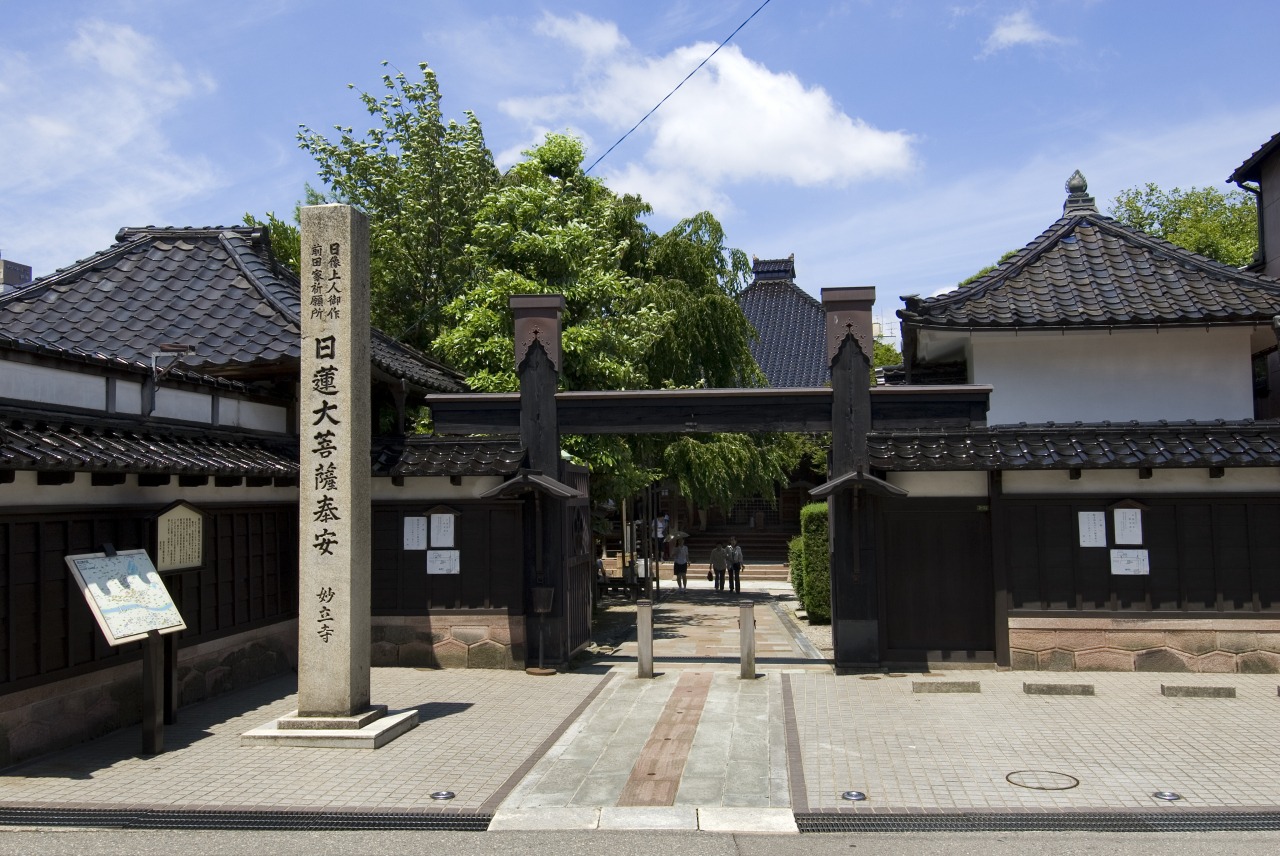
The mysterious Myoryuji Temple is called the Ninja Temple because of the various tricks it employs and it is said, Once you enter, you will never get out.
The exterior is a two-story building, but the interior has four floors and seven stories.
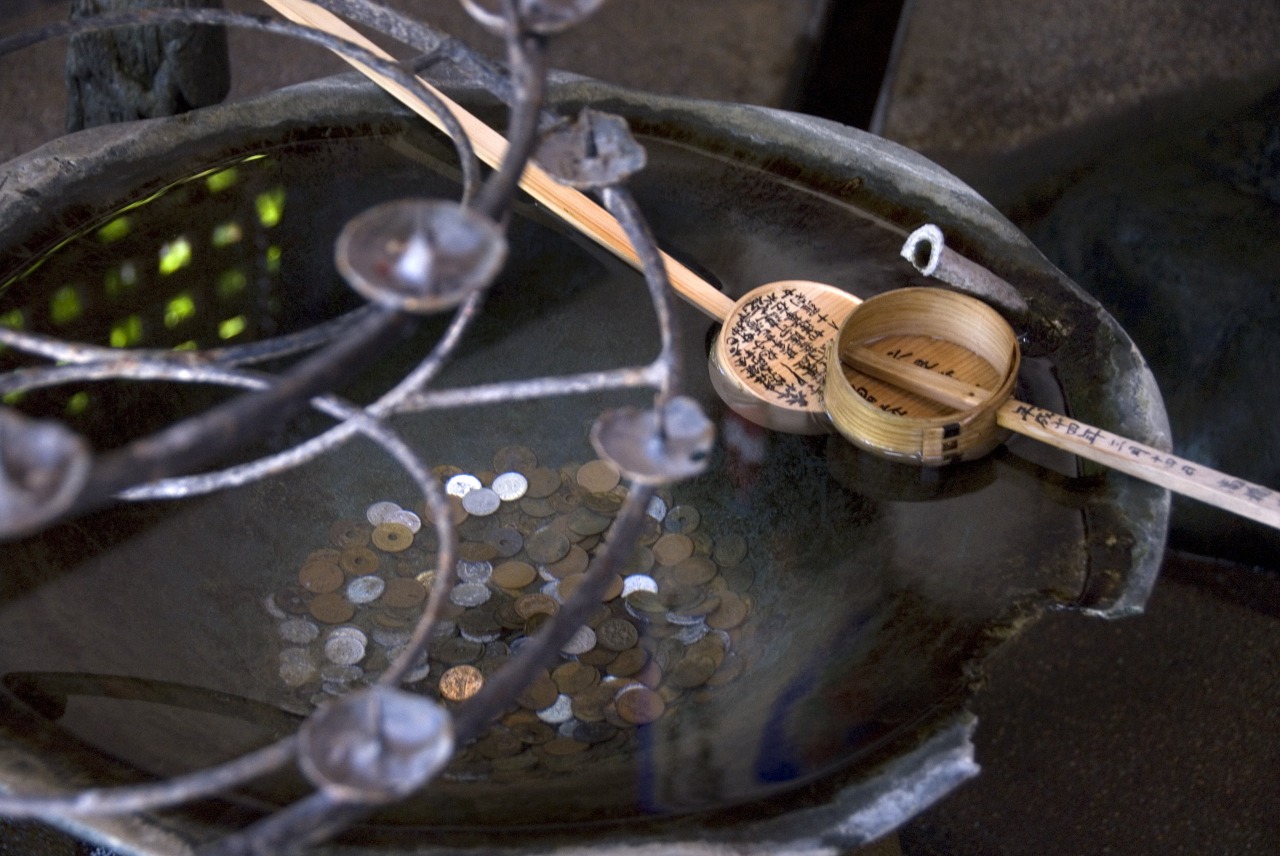
It also has a mezzanine floor and a second floor with 23 rooms and 29 staircases. It was built in anticipation that the Maeda family would be attacked by the Tokugawa Shogunate and as a countermeasure in case of emergency.
Oyama Shrine
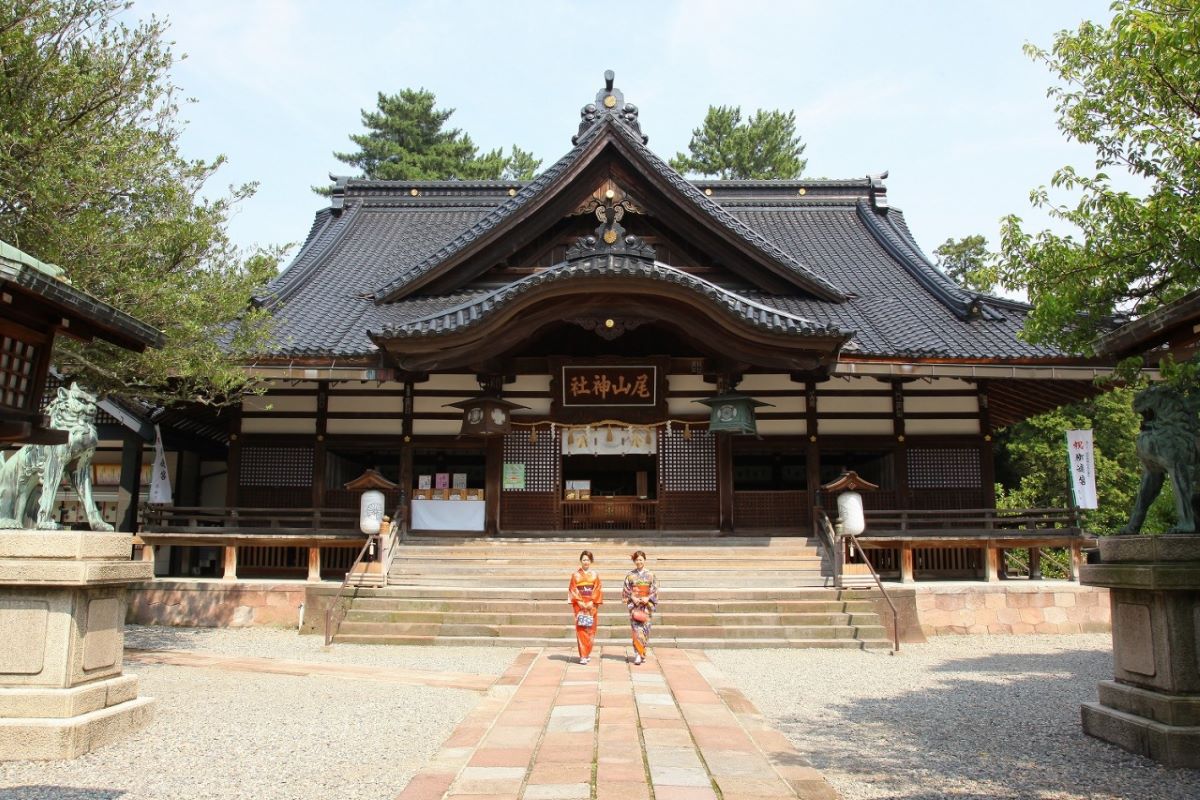
The must-visit Oyama Shrine is dedicated to Lord Maeda Toshiie, the first lord of the Kaga Domain, and his wife Omatsu no Mata.
The distinctive Kamimon Gate, which incorporates Japanese, Chinese, and Western styles, is designated as a National Important Cultural Property.
21st Century Museum of Contemporary Art
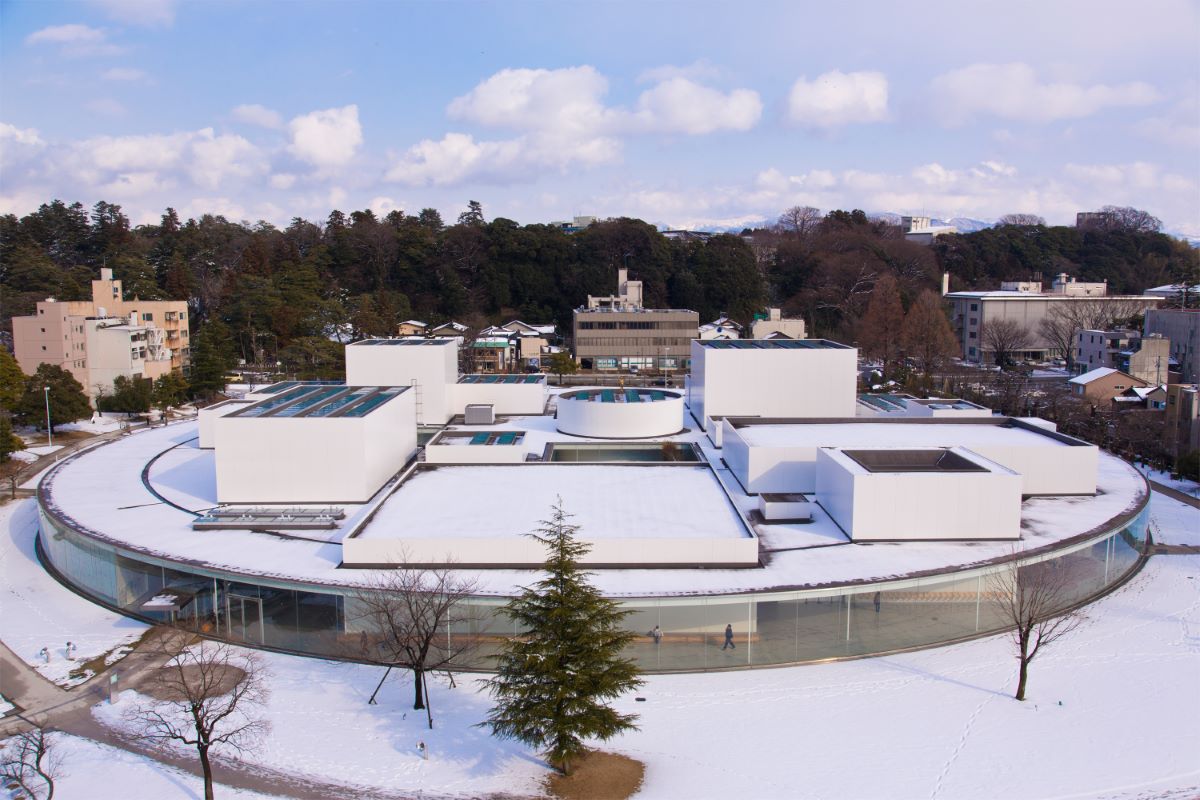
Kanazawa is a great city to visit for art lovers and The 21st Century Museum of Contemporary Art is a prime season for this.
The architectural concept of the museum is open style to encourage the feeling that anyone can drop in at any time.
The stylish building, which features a glass art circle with no front or back, can be entered from any direction and the front entrance, foyer, and the so-called “Interaction Zone” can be entered free of charge.
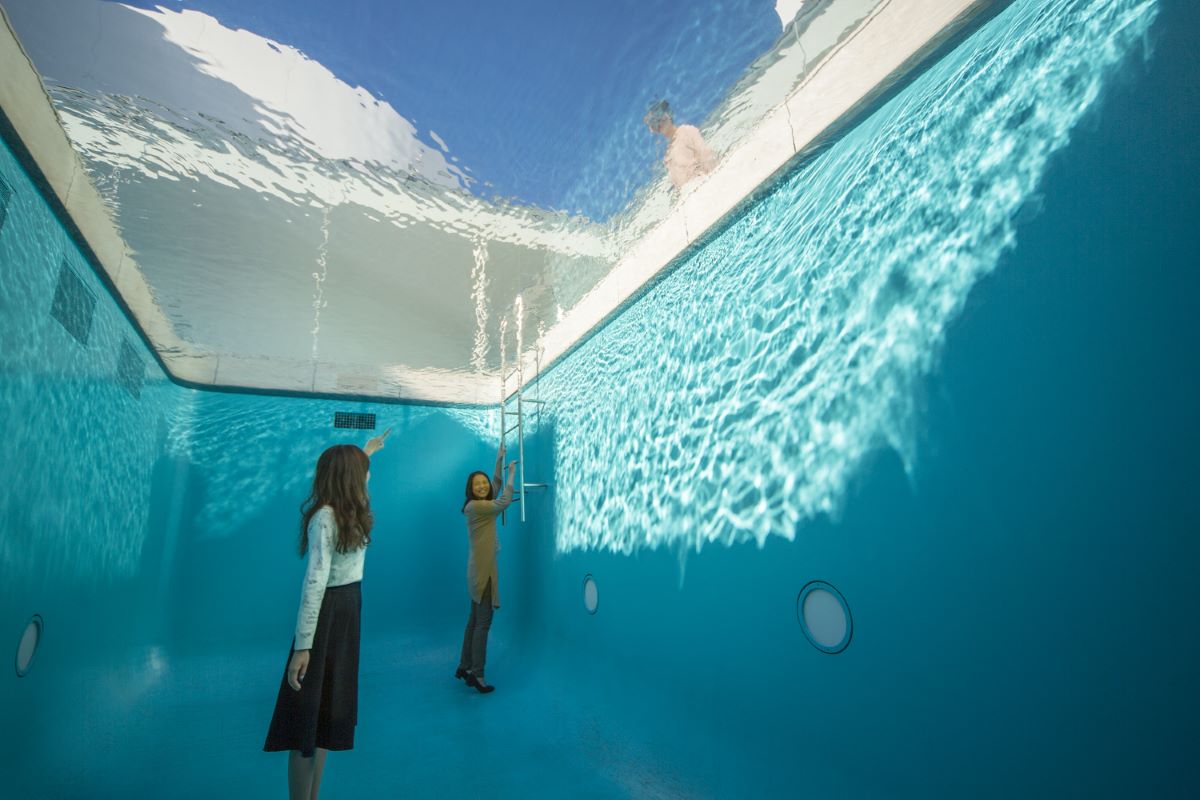
There are many mind-bending and powerful modern art exhibits to see, touch, and experience, including Leandro Erlich’s iconic Swimming Pool, which offers different views from above and below.
The Unique sculptures scattered around the lawn on the grounds of this great contemporary museum are also popular.
Nishi Chaya District
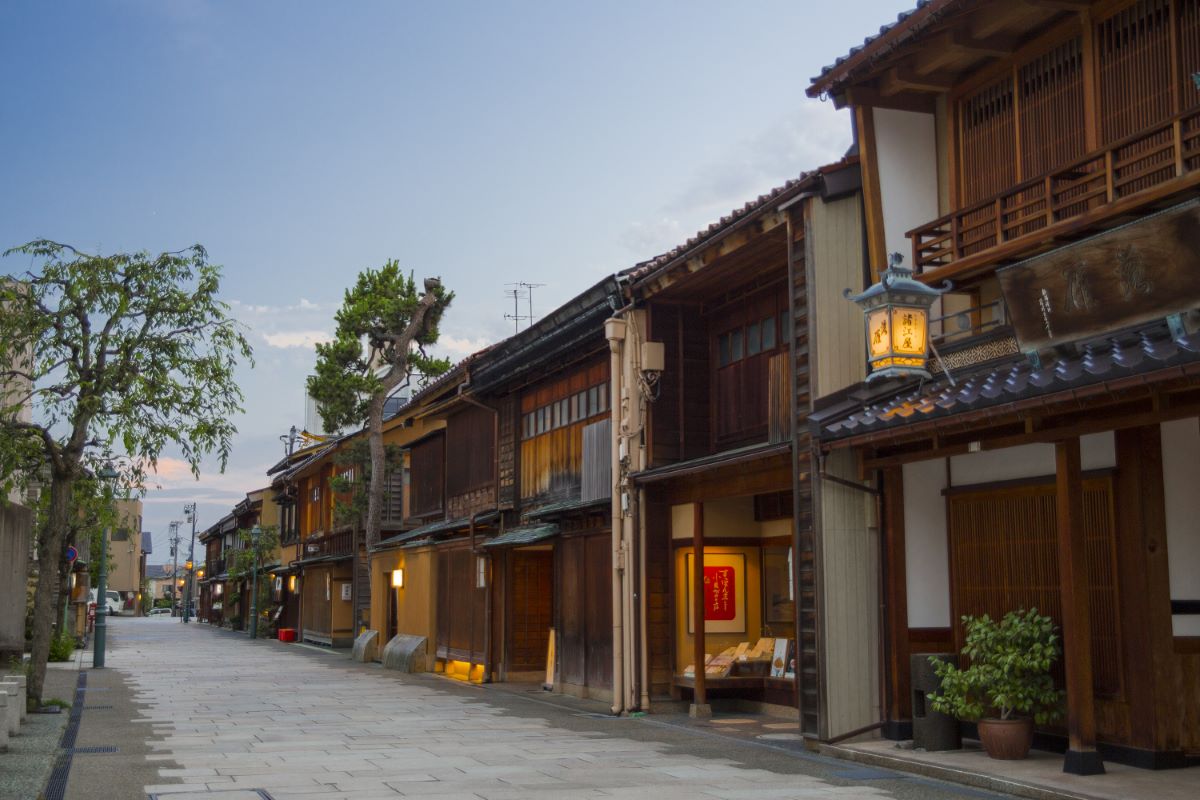
A quiet teahouse district lined with elegant teahouses and many active geikos
Nishi Chaya-gai is located in the Teramachi area across the Saikawa River and like the Higashi Chaya district, it was built around 1820.
The nostalgic streets with beautiful teahouse architecture, with their protruding latticework, are full of atmosphere.
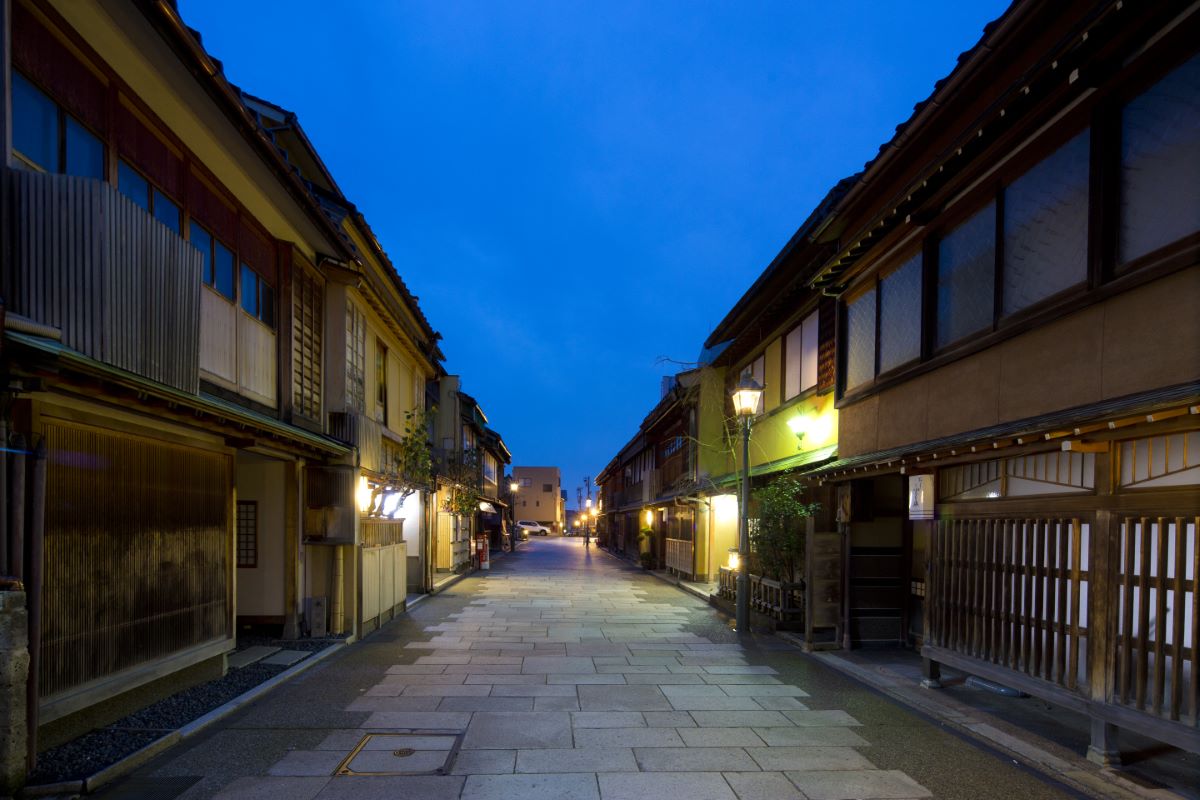
Despite its compact size, Nishi Chaya-gai has the largest number of geiko in active service of the three geisha districts in Kanazawa.
For a taste of the atmosphere of a traditional tatami room, you can visit the Kanazawa City Nishi Chaya Shiryokan Museum. The teahouse’s red-shell-walled tatami rooms have been recreated and can be visited free of charge.
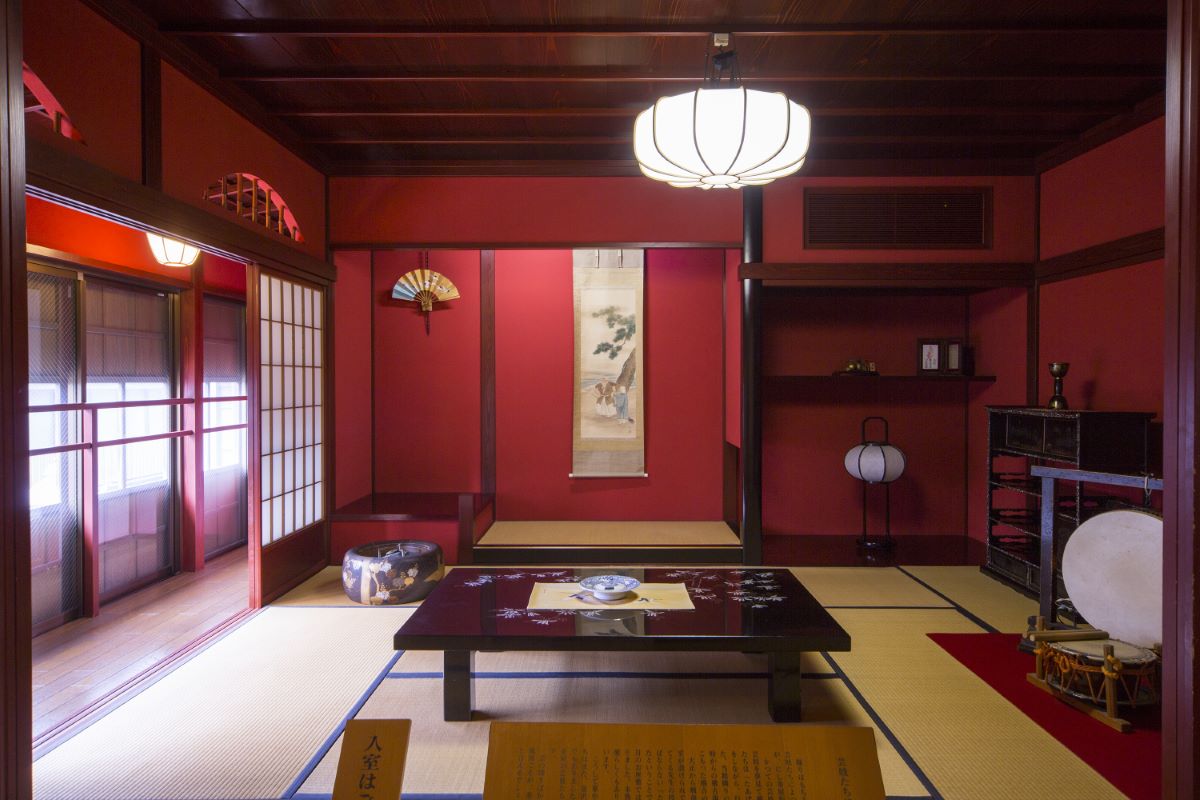
The area is relatively uncrowded among the three teahouses, so it is recommended for a relaxing stroll while taking pictures. There are many stores selling sweets, making it a perfect place to buy souvenirs
Myoritsuji Temple, known as a ninja temple, is also located nearby. The temple is full of interesting tricks such as pitfalls, hidden stairs, and a well that is said to have served as an escape route to Kanazawa Castle.
Kanazawa Station Area
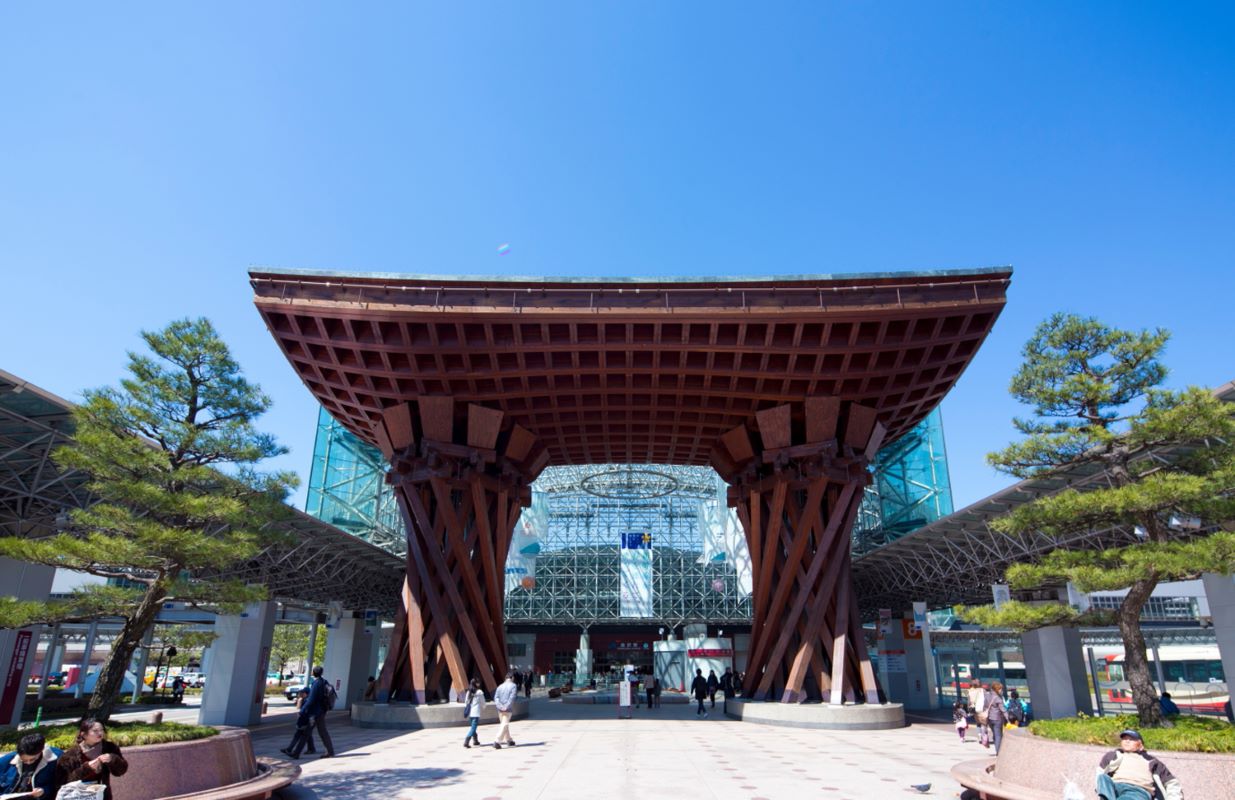
At Kanazawa Station, the gateway to Kanazawa, you will be greeted by the impressive Tsuzumimon or Drum Gate.
The powerful wooden gate, decorated with a motif of a traditional drum, personifies the city perfectly.
The glass Motenashi Dome in the East of the station is said to resemble a rain umbrella offered to visitors to Kanazawa in a tacit acknowledgment that the city does not perhaps have the best weather in all of Japan.

Kanazawa Station is also home to Kanazawa Hyakubangai, where you can buy a wide variety of Kanazawa souvenirs and products.
Pro Tip: There are a few fantastic and reasonably priced sushi restaurants within the station building.
Nagamachi Samurai District
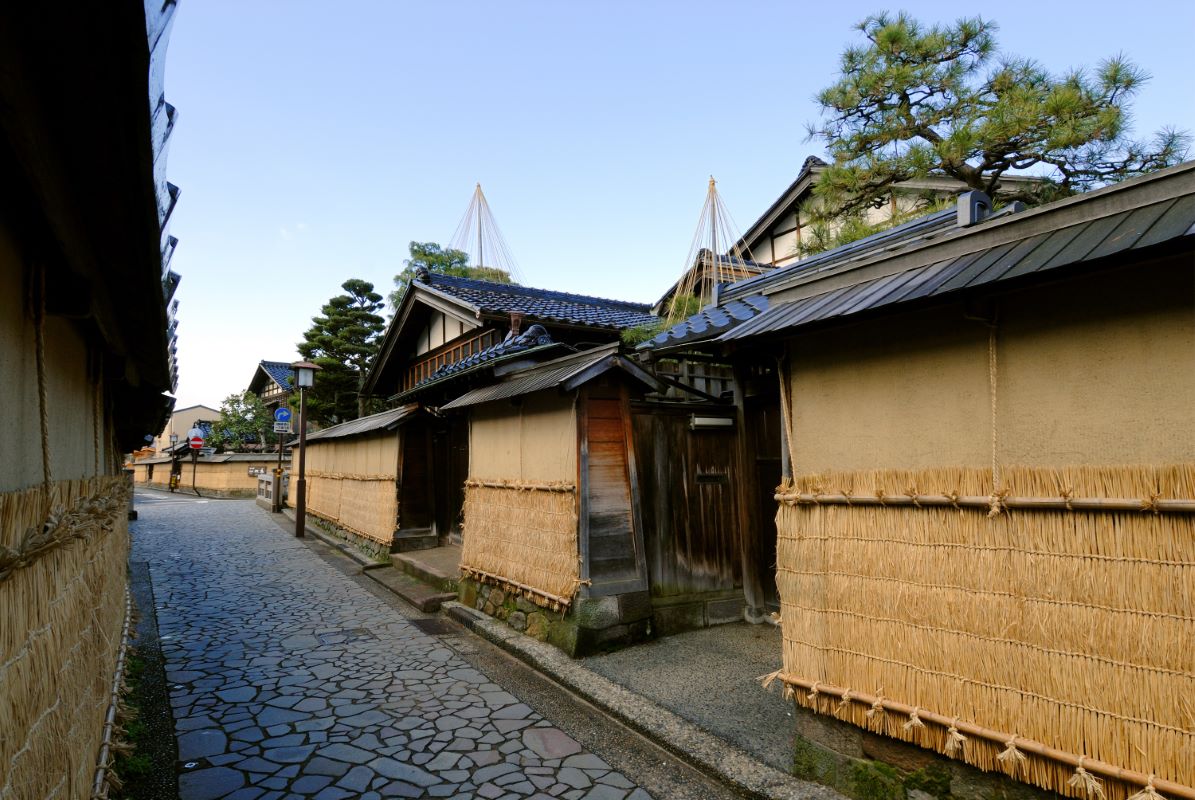
The Nagamachi Samurai District is an area where middle-class samurai of the Kaga domain used to call home during the Edo period.
There are many well-preserved samurai houses, some of which you can enter to get an up-close look at samurai culture.

The captivating old samurai district is still surrounded by earthen walls as they were in the feudal era and a walk through the streets of this area is one of the best things to do in Kanazawa.
The winding streets and narrow laneways in the area are designed to confuse and bewilder enemy samurai to prevent ambushes.
D. T. Suzuki Museum

D. T. Suzuki Museum displays exhibits related to D. T. Suzuki, a renowned Buddhist scholar from Kanazawa who was instrumental in introducing Japanese Zen philosophy to the non-japanese world.
The museum is designed to reflect the world of the prominent Buddhist philosopher and zen Buddhism not only in the exhibits but also in the facility itself.
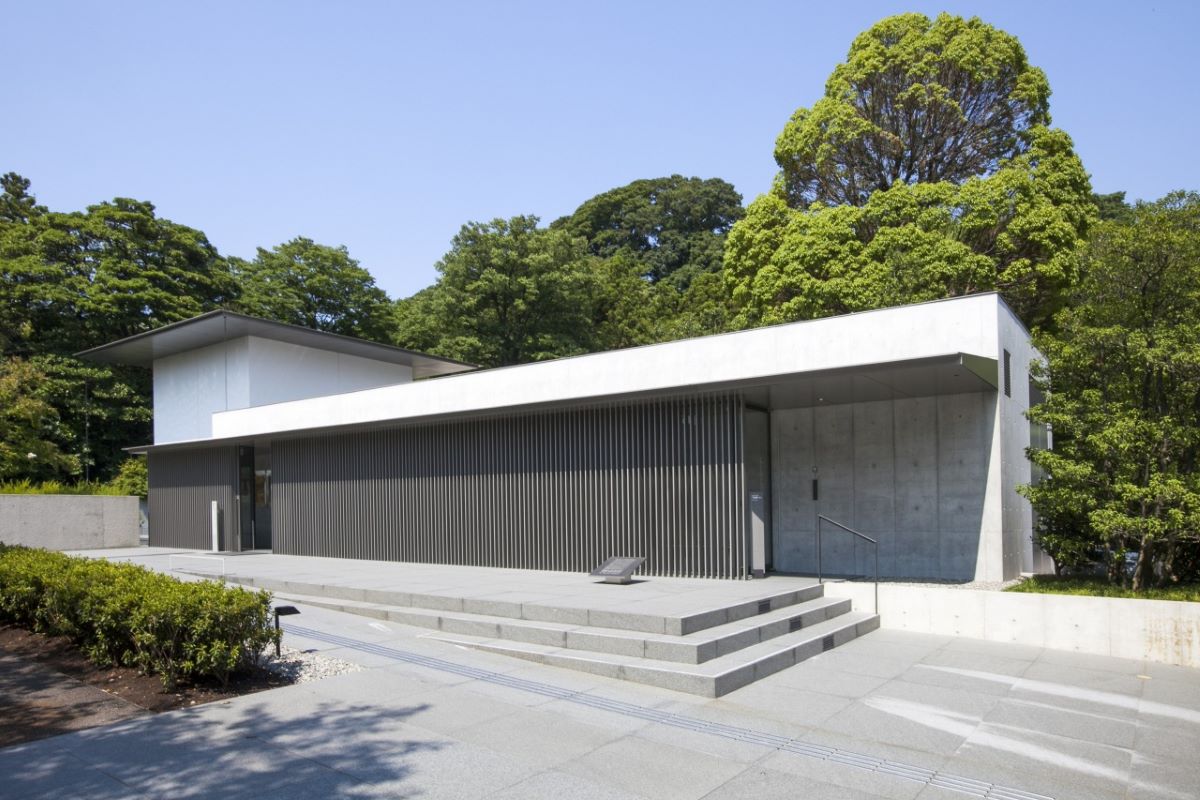
The Water Mirror Garden is filled with shallow water, and the “Contemplation Space Building” is built to float in the water mirror garden, creating a unique space.
The exhibited books and photos do not have detailed explanations but are interesting nonetheless.
Seisonkaku Villa
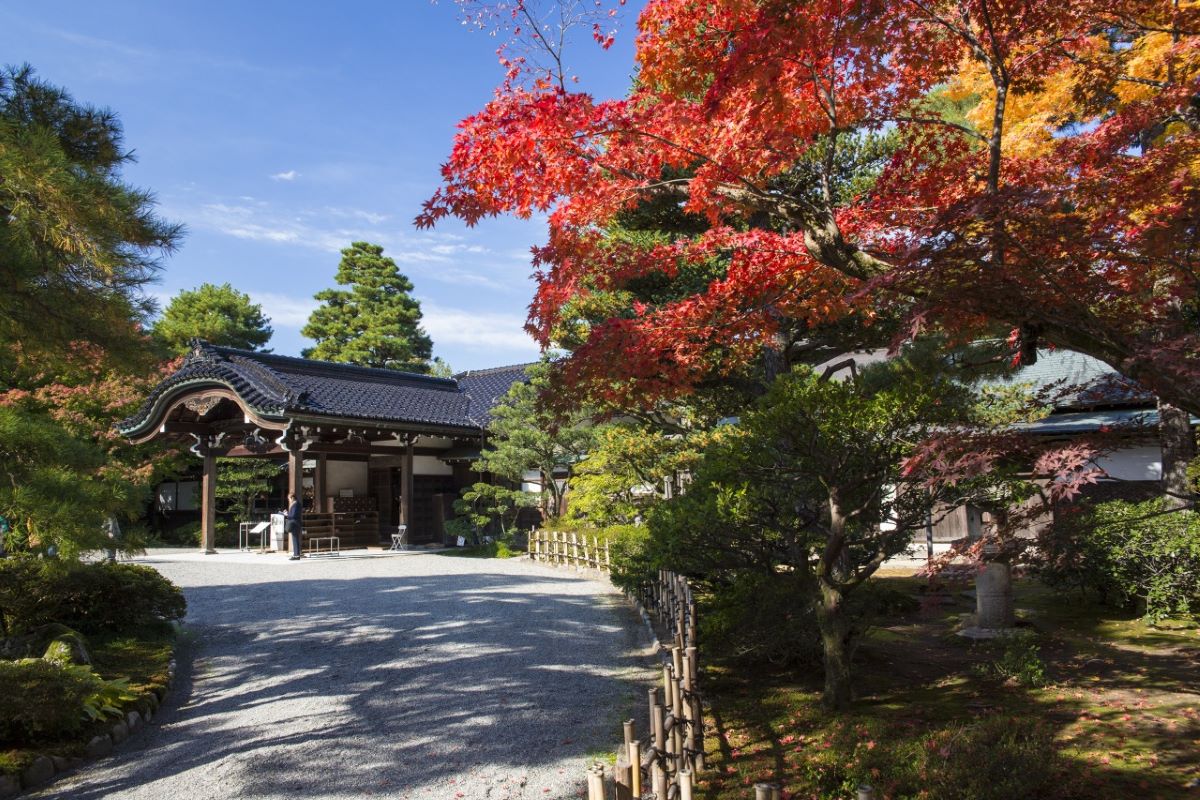
Nariyasu Maeda, the 13th lord of the Kaga Domain, built Seisonkaku for his mother, Shinryuin, and it is now a historical building that many tourists visit daily.
Since it is located next to Kenrokuen Garden, it is a must-visit place while sightseeing in Kenrokuen Garden.
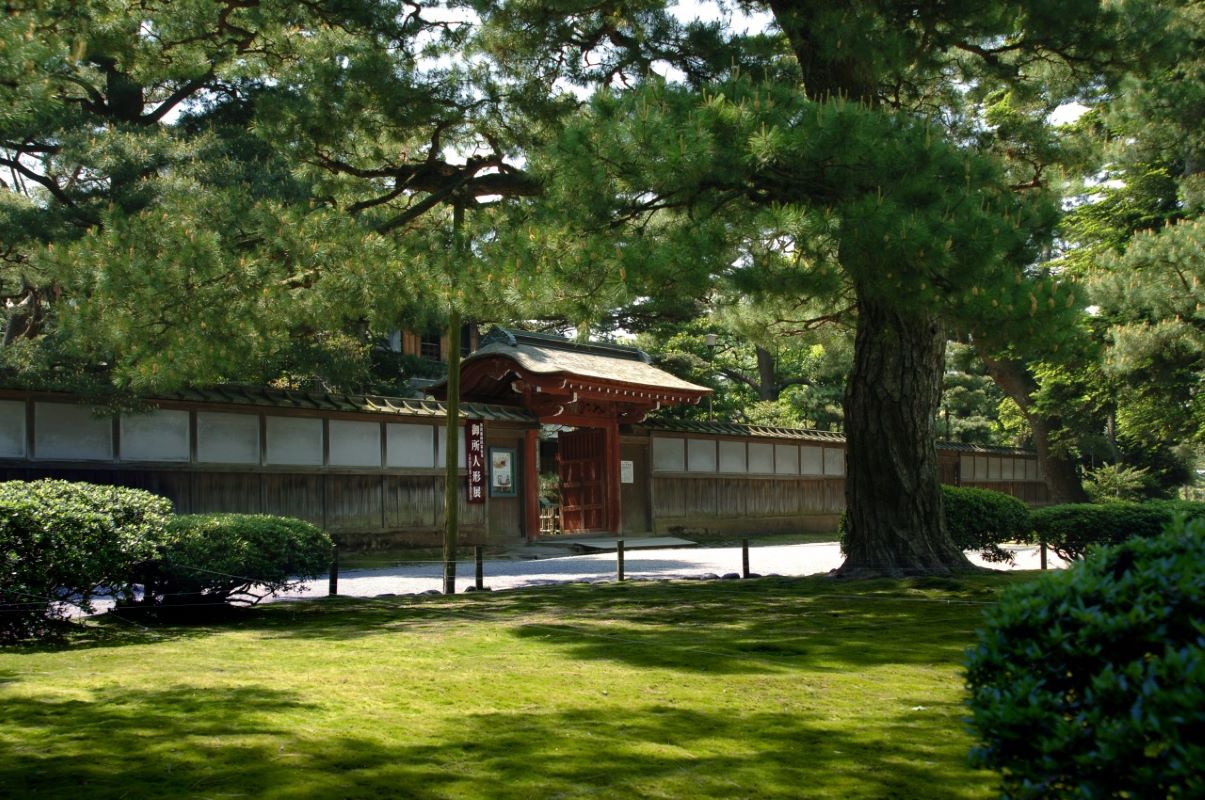
We loved the veranda, which has no pillars, giving it a clean, uncluttered look.
The other highlight is the lush greenery, which overlooks an open veranda that stretches approximately 20 meters.
Exhibits are sometimes displayed featuring various traditional Japanese crafts such as Hina dolls and kimonos.
Kanazawa Phonograph Museum
Kanazawa Phonograph MuseumThe Kanazawa Phonograph Museum has a collection of about 600 phonographs from the Edison era, and 150 are on display at any given time.
The unique museum also has about 30,000 records in its extensive collection.
Kanazawa Phonograph MuseumThe photographs on display range from the Edison-era cylindrical wax tube phonograph to the Victrola Credenza phonograph, which is called the “king of phonographs” by phonograph aficionados for its sound quality and volume.
The Phonograph Demonstrations are held every day at 11 am, 2 pm, and 4 pm and allow visitors to listen to the sound of rare photographs live.
Ishikawa Prefectural Museum Of Art
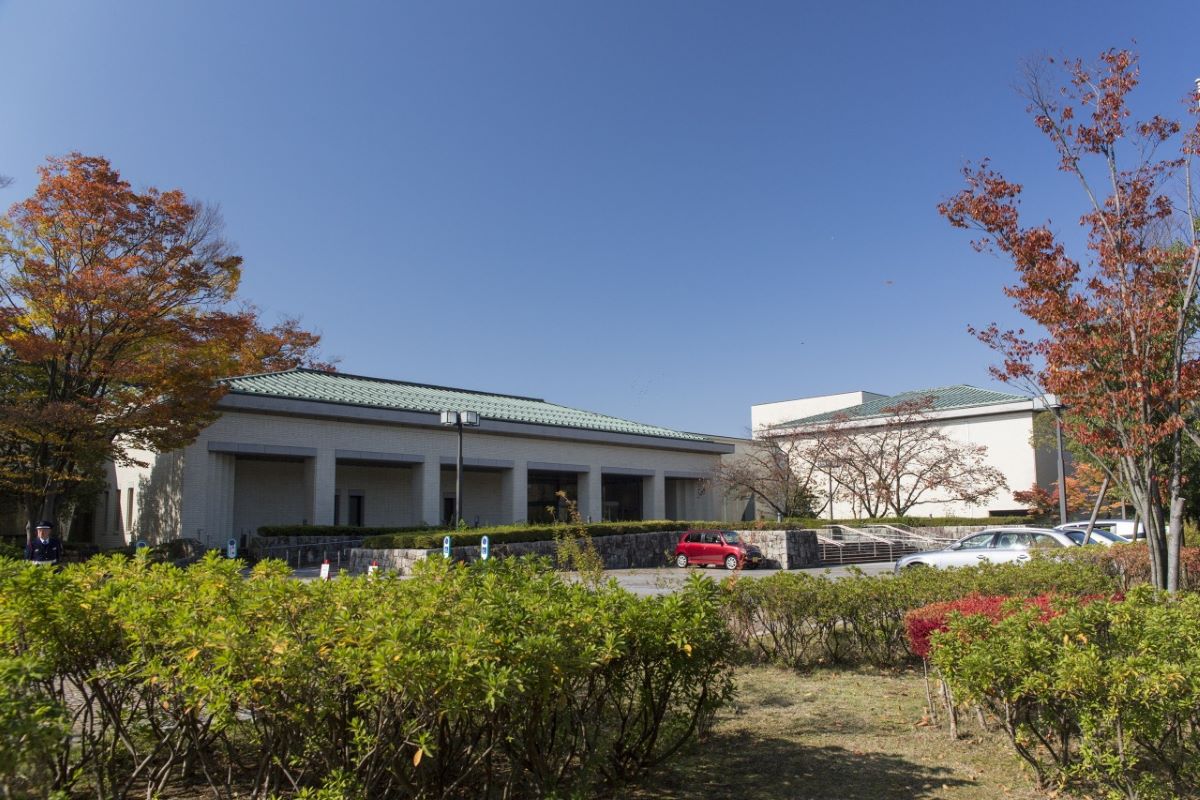
The wonderful Ishikawa Prefectural Museum Of Art exhibits a wide range of works, from masterpieces of Ko-Kutani and treasures inherited from the Maeda clan of the Kaga Domain to contemporary design paintings, sculptures, and Japanese-style paintings.
Many masterpieces are on display, and the National Treasure Iroe Kiji Koro by Nonomura Ninsei is a particular must-see.
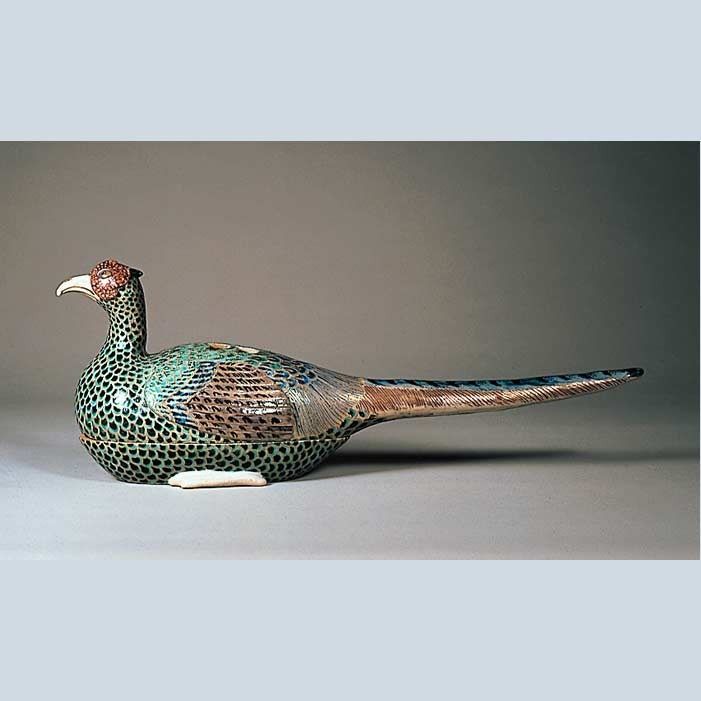
Visitors can appreciate works by masters of their craft, including fine products made of Kaga maki-e lacquerware and traditional crafts made by famous artisans of the area.
A café produced by a well-known and skilled patissier is located in the entrance hall, where you can taste sweets made with plenty of local ingredients.
Kanazawa Shrine
Kanazawa ShrineThis is a small but beautiful shrine that is believed to have been built as a guardian deity for the domain school built by Harunobu Maeda, the 11th lord of the Kaga domain.
Therefore, Sugawara no Michizane, the god of learning, is worshipped here.
A white snake is also worshipped here to ward off misfortune and this belief in the magical protective powers of the white snake is well rooted in this Kanazawa area.
Although small, the hall of worship is magnificent and worth seeing. There are also charms, talismans, and red seals on display.
Kanazawa Gold Leaf Museum

It may be a little-known fact, but approximately 99% of the gold leaf produced in Japan is made in Kanazawa and this is the only museum in Japan specializing in gold leaf.
The museum was built by Takaaki Yasue, a gold leaf craftsman, who wanted to leave the pride of gold leaf craftsmanship and its techniques to future generations.
Inside the museum, you can learn about the process of gold leaf production.
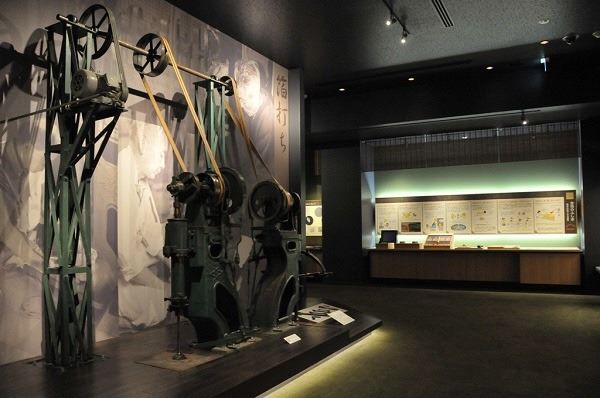
The world of gold leaf, which is 1/10,000th of a millimeter thick, is a place where visitors can experience the amazing workmanship of gold leaf artisans.
Located near the Higashi Chaya-Gai district, it is recommended as a sightseeing spot to stop by on your way back to central Kanazawa.
Kawabata no Yujyuku Taki Tei
Kawabata no Yujyuku Taki Tei is located on the banks of the Saigawa River in a peaceful rural setting.
The pure Japanese-style building is decorated with a modern and warm interior and it’s the perfect place to spend a quiet moment away from the hustle and bustle of the city.
From the relaxing tatami-mat-paved lobby, you can enjoy a view of the garden overflowing with water and lush greenery.
In addition to an open-air bath made of rocks and a large bath where you can feel the changing of the seasons, there is a detached house with an open-air bath where you can bathe in front of the flow of the Saigawa River.
More Things To Do In Kanazawa
Even more, things to do in Kanazawa
- Take a road trip to the wild and wonderful Noto Peninsula
